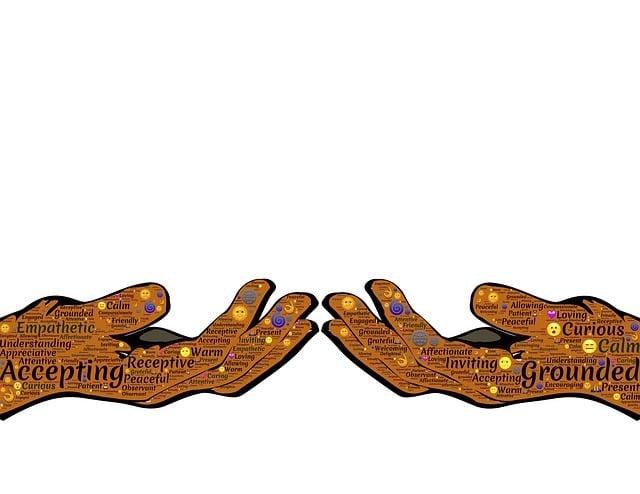Table of Contents
- Understanding Planetary Boundaries and Their Implications for Business Practices
- Integrating Ecological Insights into Corporate Strategy for Sustainable Growth
- Measuring Corporate Impact through the Lens of Planetary Boundaries
- Innovative Approaches to Align Business Operations with Ecological Limits
- Building a Sustainability-Oriented Corporate Culture in the Context of Planetary Boundaries
- Q&A
- To Wrap It Up

Understanding Planetary Boundaries and Their Implications for Business Practices
Planetary boundaries serve as a critical framework that defines the safe operating space for humanity, highlighting the ecological limits within which we can function sustainably. Businesses must recognize these boundaries as essential components of their operational strategies. By acknowledging the limits of Earth’s systems, such as climate change, biosphere integrity, and freshwater usage, companies can better align their practices with ecological realities. This alignment not only risks management but also opens avenues for innovation in sustainable products and services.
Implementing practices that respect these planetary limits involves a shift in corporate mentality. Organizations should adopt net-zero emissions goals, promote the circular economy, and prioritize sustainable sourcing to ensure that their operations do not exacerbate ecological crises. Key strategies may include:
- Investing in renewable energy
- Reducing waste through innovative recycling methods
- Engaging in sustainable land-use practices
| Planetary Boundary | Implication for Business |
|---|---|
| Climate Change | Transition to renewable energy sources and reduce carbon footprint. |
| Biodiversity Loss | Implement sustainable practices in supply chains to protect ecosystems. |
| Freshwater Use | Adopt water-efficient technologies and practices. |
Moreover, engaging stakeholders in sustainability initiatives can enhance a company’s reputation and build customer loyalty. Transparency in environmental impact reporting fosters trust and invites collaboration within sectors. Business practices that resonate with planetary boundaries can lead to a competitive advantage as more consumers prioritize sustainability in their purchasing decisions. Understanding and incorporating these ecological foundations into corporate strategies not only secures business viability but also contributes positively to the planet’s health.

Integrating Ecological Insights into Corporate Strategy for Sustainable Growth
In today’s interconnected world, the urgency to reconcile corporate ambitions with ecological realities has never been more pressing. Businesses can no longer afford to operate under the traditional paradigms of profit maximization without considering their environmental impacts. Integrating ecological insights into corporate strategy fosters a sustainable growth model that aligns with the planet’s limits, allowing companies to thrive while championing conservation. By incorporating principles of ecological economics, organizations can reimagine their operations and value chains.
One effective approach is to leverage the concept of planetary boundaries, which outlines the safe operating space for humanity. Businesses can use this framework to assess their ecological footprint and identify strategies that minimize adverse effects on the environment. Key strategies include:
- Resource Efficiency: Adopting practices that optimize resource use helps in reducing waste and conserving energy.
- Sustainable Sourcing: Prioritizing materials that are renewable and sustainably harvested ensures long-term availability and reduces ecosystem degradation.
- Innovation in Product Design: Creating products that are designed for a circular economy encourages reuse and recycling, reducing the strain on natural resources.
Moreover, fostering a culture of sustainability within organizations requires a shift in mindset from viewing sustainability as a compliance obligation to seeing it as a strategic advantage. Companies can benefit from establishing interdisciplinary teams that focus on integrating ecological considerations into decision-making processes across all business levels. By measuring success through environmental, social, and governance (ESG) metrics alongside traditional financial KPIs, firms can create a balanced scorecard that reflects their commitment to sustainable practices.
Measuring Corporate Impact through the Lens of Planetary Boundaries
Understanding corporate impact requires a comprehensive approach that aligns business operations with ecological limits. By analyzing performance through the lens of planetary boundaries, organizations can evaluate their sustainability practices more effectively. These boundaries define a safe operating space for humanity, focusing on critical Earth-system processes that, if disrupted, could lead to destabilizing changes. Corporate strategies that incorporate these concepts can foster resilience, serving both the environment and the bottom line.
To measure their impact, companies can adopt key performance indicators (KPIs) that reflect their adherence to planetary boundaries, including:
- Carbon Footprint: Assessing greenhouse gas emissions to ensure they remain within safe limits.
- Water Usage: Monitoring consumption in relation to regional water availability, aiming for sustainable practices.
- Biodiversity Impact: Evaluating the effect of operations on local ecosystems and species.
Creating a structured reporting framework that incorporates these indicators will provide transparency and accountability. For instance, the following table outlines possible metrics suitable for aligning corporate goals with ecological integrity:
| Boundary | Corporate Metric | Target |
|---|---|---|
| Climate Change | Annual CO2 emissions | Net-zero by 2030 |
| Biogeochemical Flows | Nitrogen footprint | 50% reduction by 2025 |
| Land-System Change | Reforestation efforts | Plant 1 million trees annually |

Innovative Approaches to Align Business Operations with Ecological Limits
Embracing innovative strategies is crucial for businesses aiming to operate within ecological limits while maintaining their competitive edge. One effective approach is adopting a circular economy model, which focuses on minimizing waste and maximizing resource efficiency. By rethinking traditional production processes, companies can transform discarded materials into valuable inputs, leading to reduced ecological footprints and cost savings. This shift not only conserves natural resources but also opens new avenues for revenue generation through innovative product lines and services, thereby creating a resilient business framework.
Furthermore, businesses can leverage emerging technologies such as Artificial Intelligence (AI) and the Internet of Things (IoT) to enhance their operational efficiency. By integrating smart systems, organizations can monitor resource consumption in real-time, identify inefficiencies, and adjust their operations proactively. This data-driven approach promotes sustainable practices by allowing companies to forecast demand with greater accuracy, reducing waste and optimizing logistics. Such technological advancements empower businesses to make informed decisions that align profitability with planetary health.
A collaborative ecosystem is also essential for organizations seeking to align their operations with ecological limits. Forming partnerships with NGOs, research institutions, and other businesses can foster knowledge exchange and resource sharing. By engaging in initiatives such as sustainability reporting, joint innovation projects, and community outreach programs, companies can amplify their impact and promote a culture of sustainability. This not only enhances corporate reputation but also cultivates consumer trust, ultimately driving long-term success. Here’s a brief overview of collaborative strategies:
| Strategy | Description |
|---|---|
| Partnerships with NGOs | Collaborate on environmental conservation projects to enhance corporate social responsibility. |
| Joint Innovation Projects | Work with other companies to develop sustainable technologies and practices. |
| Community Outreach | Engage with local communities to promote sustainable behaviors and education. |

Building a Sustainability-Oriented Corporate Culture in the Context of Planetary Boundaries
Creating a culture that prioritizes sustainability requires a multi-faceted approach, deeply rooted in the principles of planetary boundaries. This involves understanding the ecological limits set by our planet and integrating this awareness into the core values of the organization. Leadership commitment plays a crucial role in this transformation; when decision-makers prioritize sustainability within their strategic objectives, it sets a tone that permeates all levels of the company. This can be achieved through training programs, policy development, and incorporating environmental considerations into business decisions.
Engaging stakeholders is essential for fostering a sustainability-oriented culture. This includes employees, customers, and even the wider community. Key strategies include:
- Inclusive Workshops: Facilitate discussions that allow employees to share ideas and contribute to sustainability goals.
- Transparency Initiatives: Regularly communicate the company’s sustainability progress and challenges to build a sense of shared responsibility.
- Feedback Mechanisms: Implement channels through which stakeholders can voice their concerns and suggestions regarding sustainability practices.
Embedding sustainability in the corporate culture also means recognizing the interdependence of social and ecological systems. This is where adopting metrics that align with planetary boundaries becomes important. Companies can start by implementing a simple sustainability dashboard, tracking key performance indicators such as:
| Indicator | Description | Alignment with Planetary Boundaries |
|---|---|---|
| Carbon Footprint | Total greenhouse gas emissions produced | Limits to Climate Change |
| Water Usage | Volume of water consumed per year | Freshwater Appropriation |
| Waste Generation | Amount of waste produced and recycled | Biogeochemical Flows |
By systematically assessing their impact against these indicators, corporations can foster a culture of accountability and continuous improvement, ultimately contributing to a more sustainable future that honors the limits of our planet.



0 Comments